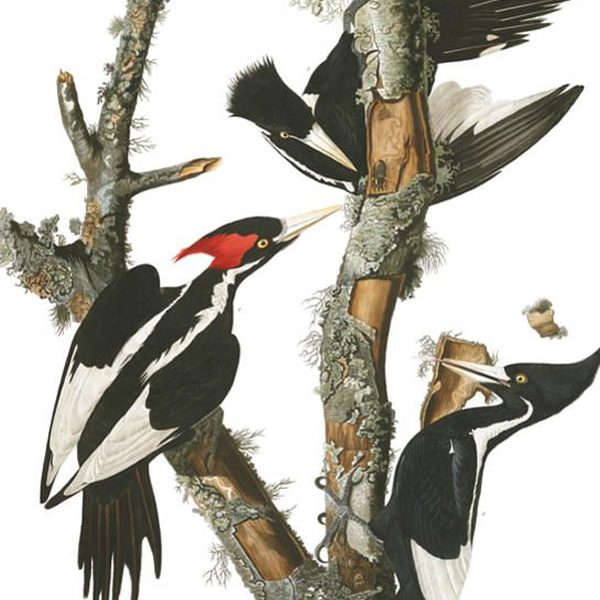
I admit that I am one of those adults who enjoys reading middle level and young adult books. I think of it as prep work for recommending books to my second grader or CLiF program attendees.
Three of my recent favorite books with teenager main characters have been One Came Home by Amy Timberlake, Okay for Now by Gary Schmidt, and The True Blue Scouts of the SugarMan Swamp by Kathi Appelt*. While all very different stories set in different eras, interestingly enough, they all incorporate Audobon prints.
In One Came Home, the prints represent the education and status of a possible suitor. In Okay For Now, the main character appreciates the art and how he can see his own life reflected in the birds plus the historical significance to the library’s collection and a library volunteer. In The True Blue Scouts, the stuffed ivory billed woodpecker initially provides the only evidence in verifying a local legend and saving the swamp.
I wondered why these authors used Audobon to appeal to young teenagers? Here are my guesses (or hopes):
- Sense of discovery – John James Audubon’s Birds of America, printed between 1827 and 1838, contains 435 life-sized watercolors of North American birds, all reproduced from hand-engraved plates. Many consider his the archetype for wildlife illustration. All the plates are now available and searchable online for today’s artist, scientist, or historian.
- Conversation starter – Audobon studies and illustrations include many extinct species. All three books bring up development and human impact on habitat; Audobon’s method and message offer an interesting way to talk about conservation.
- Inspiration – Audobon and these stories inspire the reader to go outside and to observe nature. In The True Blue Scouts, they refer to the woodpecker by its abbreviation (IBWO), a code used by ornithologists, which makes the science so much more intriguing.
Part of the underlying reasoning for CLiF’s year-long programming is that you never know what might catch a child’s attention. A reader of one of these books might be the next great wildlife photographer, climatologist, art historian, or they might just have a new appreciation for their environment.
* I listened to this with my second grader and highly recommend the recorded story read by Lyle Lovett.


